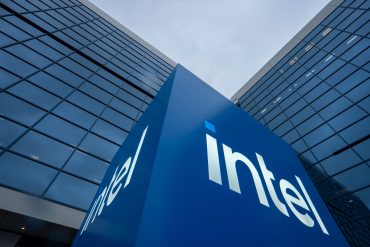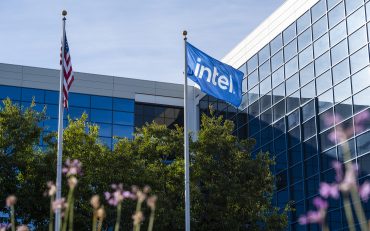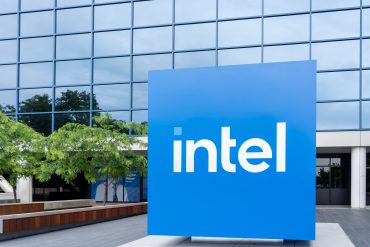
- CHIPS Act
- Policy & Regulation
- Semiconductors
U.S. Government Takes 10% Intel Stake in $11.1 Billion CHIPS Deal
6 minute read

Federal semiconductor investment transforms Intel’s future as government becomes key stakeholder in American chip manufacturing renaissance
Key Takeaways
- $1.9 billion immediate paper gain as U.S. government acquires 10% Intel stake at $20.47 per share, below market price of $24.80
- $11.1 billion total investment funded through CHIPS Act gives government major shareholder position in struggling chipmaker without voting rights
- Intel shares rise 6% following announcement amid company’s turnaround efforts after $19 billion losses and 20,000 job cuts
Introduction
The U.S. government has secured a 10% stake in Intel through an $11.1 billion investment that immediately generated $1.9 billion in paper gains. President Trump announced the acquisition, which converts previous CHIPS Act funding into equity ownership of 433.3 million non-voting shares purchased at a significant discount to market price.
This unprecedented move positions the federal government as one of Intel’s largest shareholders during a critical period for the semiconductor giant. The investment represents a major intervention in the tech industry, driven by national security priorities and efforts to strengthen domestic chip manufacturing capabilities.
Key Developments
The deal materialized rapidly following initial tensions between Trump and Intel CEO Lip-Bu Tan over national security concerns. Trump initially pressed Tan to resign due to worries about his past investments in Chinese firms, creating uncertainty around the company’s leadership.
The situation shifted dramatically after Tan pledged loyalty to U.S. interests in a letter to employees and met with Trump at the White House. By mid-August, discussions had advanced to the point where Trump pushed Intel to surrender a tenth of its equity in exchange for government funding.
The government acquired shares at $20.47 each, compared to Intel’s closing price of $24.80, creating the immediate $1.9 billion gain. Nearly $6 billion of the investment comes from previously awarded but unpaid CHIPS Act grants, with the remainder from new equity investment through various government programs.

Market Impact
Intel shares jumped over 6% following the announcement, signaling market confidence in the government backing. The stock movement reflects investor optimism about the company’s turnaround prospects with substantial federal support behind its restructuring efforts.
The market reaction contrasts sharply with Intel’s recent performance struggles. The company has posted $22 billion in losses since 2023 and trades at a $108 billion valuation, dwarfed by competitors like Nvidia’s $4.3 trillion market capitalization.
Analysts view the government stake as providing crucial stability for Intel during its recovery phase. The backing helps legitimize the company’s turnaround strategy while addressing investor concerns about its competitive positioning in advanced semiconductors.
Strategic Insights
The investment reflects a broader shift toward treating semiconductor manufacturing as a national security priority rather than purely commercial enterprise. The government’s equity position gives it substantial influence over Intel’s strategic direction, even without voting rights or board representation.
Intel plans to use the funds to expand U.S. manufacturing capacity and research capabilities, particularly for advanced logic chips and defense applications. This aligns with CHIPS Act objectives to reduce American dependence on foreign semiconductor production and strengthen domestic supply chains.
The deal establishes a precedent for increased government involvement in critical technology sectors. Fortune reports this marks a significant evolution in public-private partnerships within the tech industry, especially for companies deemed strategically vital to national interests.

Expert Opinions and Data
Commerce Secretary Howard Lutnick praised the arrangement as “historic,” arguing it converts Biden-era subsidies into “equity for the American people.” Intel CEO Lip-Bu Tan expressed gratitude and commitment to advancing U.S. technology leadership through the partnership.
However, critics raise concerns about government intervention in private enterprise. Scott Lincicome of the Cato Institute calls the move “a horrendous decision” that entangles politics with commercial choices, while Sen. Ron Wyden criticized it as “corporate extortion.”
Tech analyst Rob Enderle warns of a “slippery slope” toward nationalization, questioning whether government ownership might lead to politicization and reduced management autonomy. Ben Bajarin of Creative Strategies asks, “Once the government becomes a stakeholder, what will they do to protect their investment?”
Nancy Tengler remains skeptical about benefits to taxpayers, advocating for less government interference and more private sector autonomy in technological advancement. These concerns echo historical precedents like the government’s General Motors stake during the 2008 financial crisis, which ultimately resulted in losses.
Conclusion
The government’s Intel investment marks a watershed moment in tech sector relations, demonstrating how national security considerations now drive industrial policy. The immediate financial gains provide political validation for the approach while supporting Intel’s critical restructuring phase.
This deal establishes government equity participation as a tool for securing strategic technology assets, setting expectations for similar interventions across critical industries. The success of this partnership will likely influence future public-private collaborations in semiconductors and other sectors deemed vital to national competitiveness.








